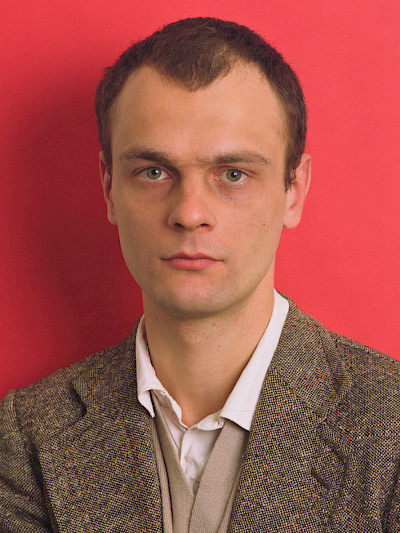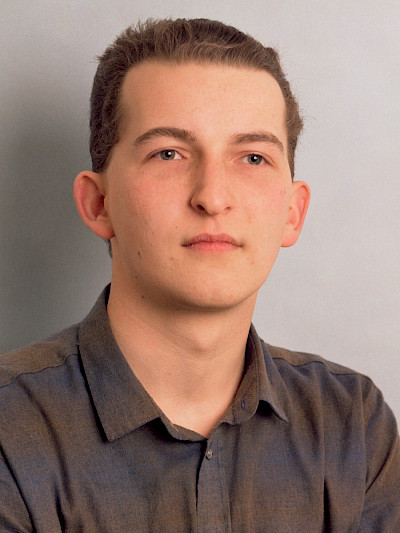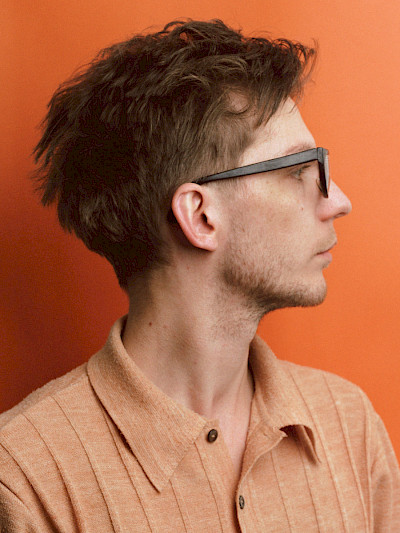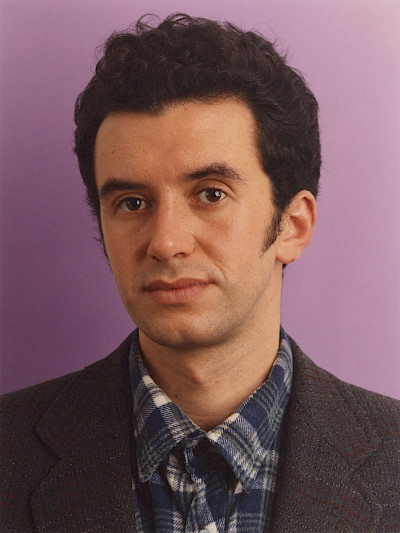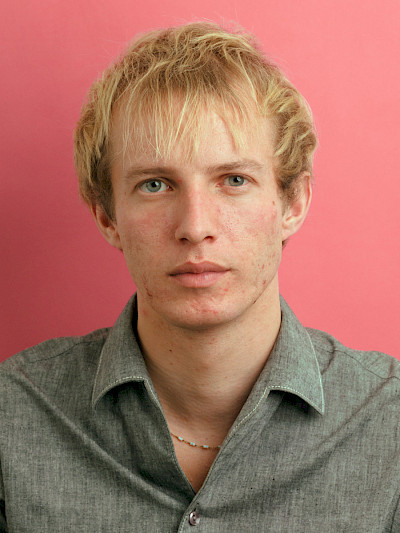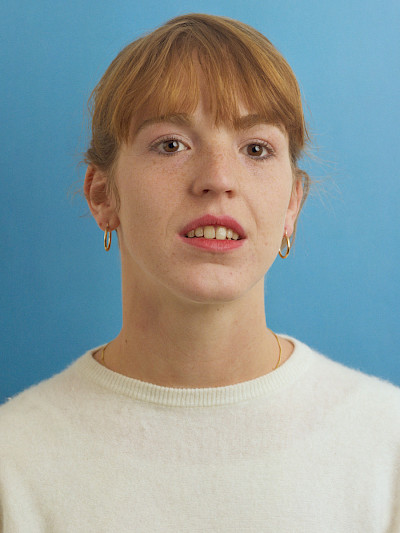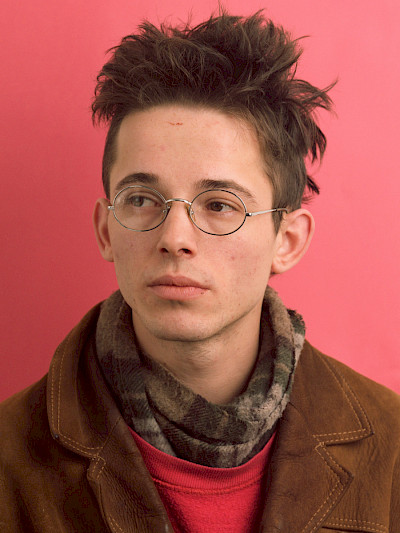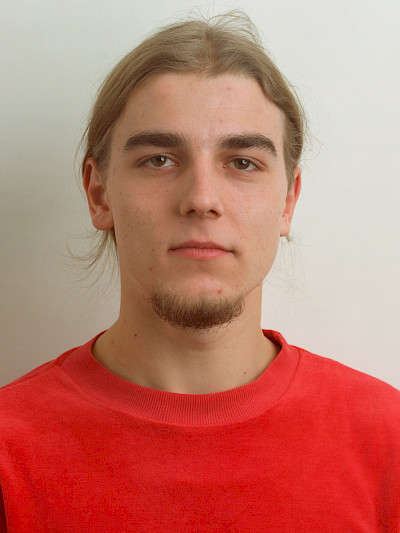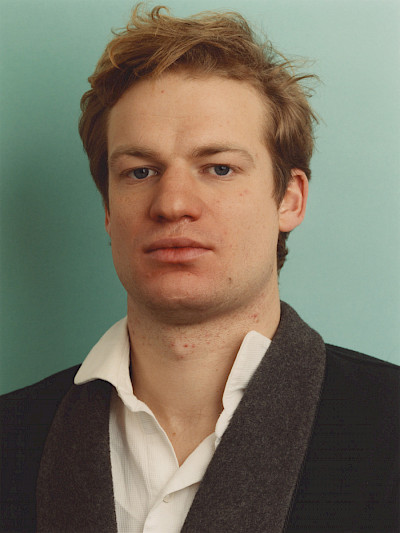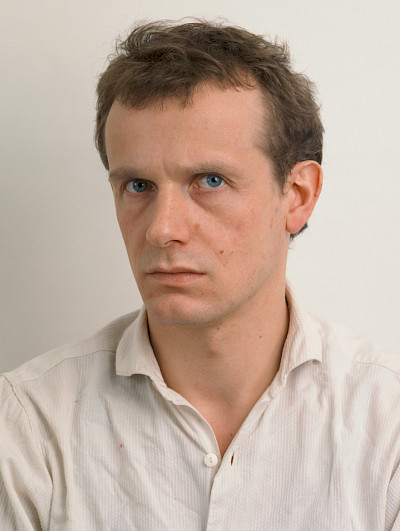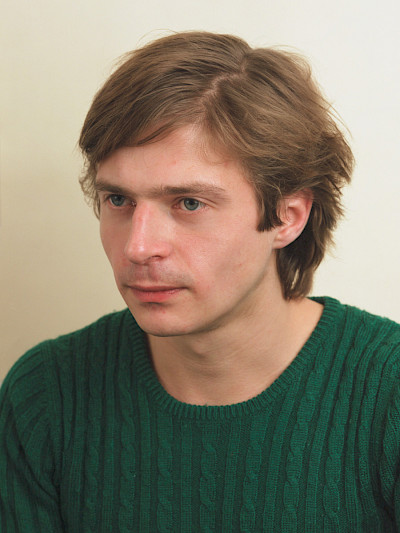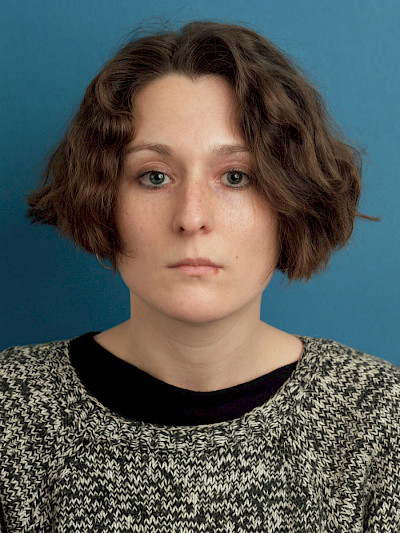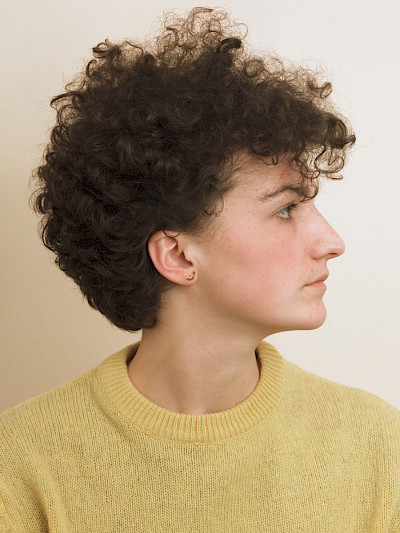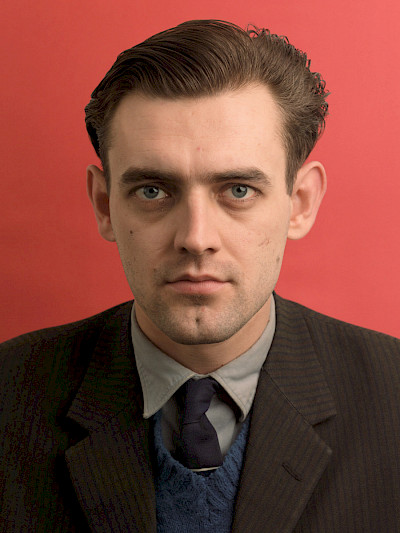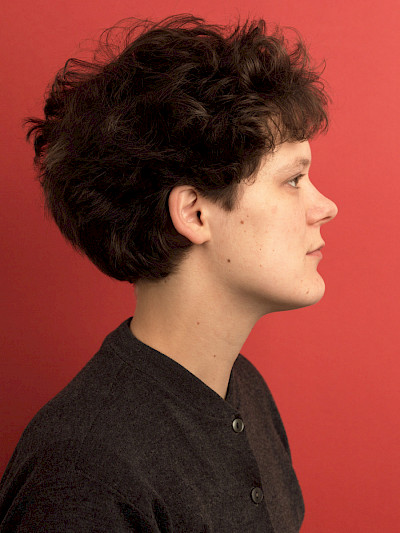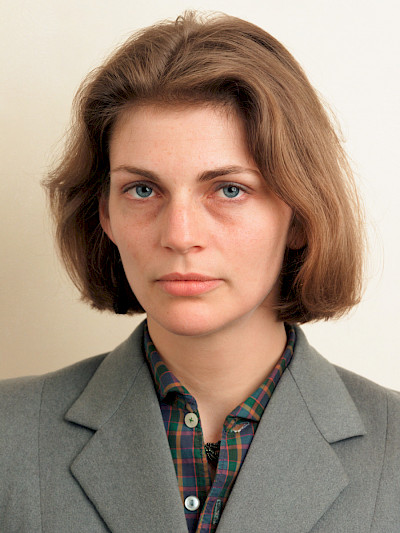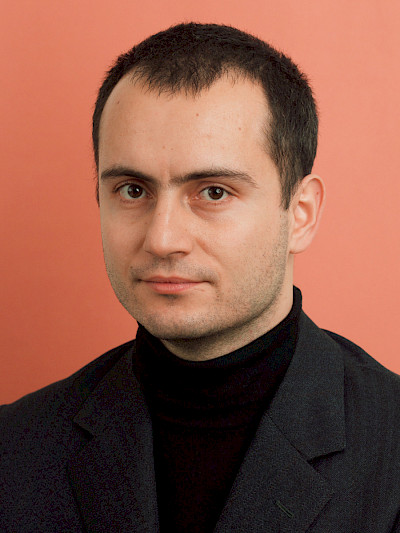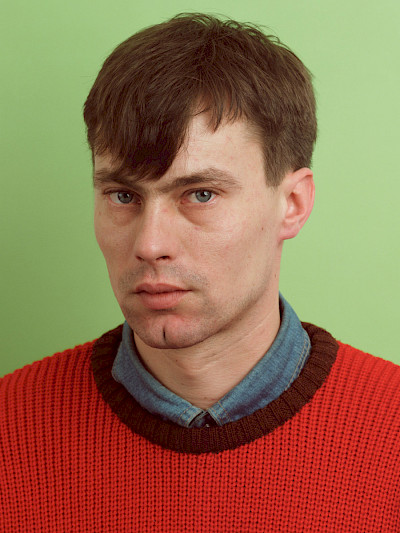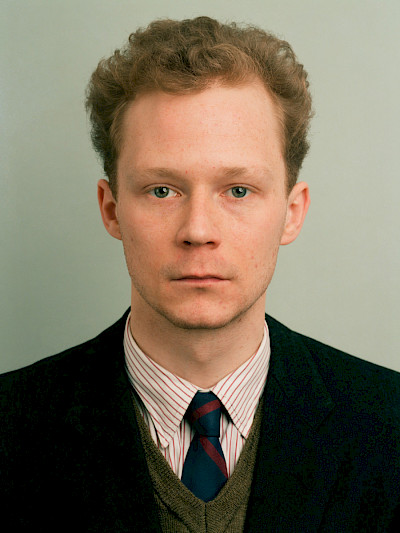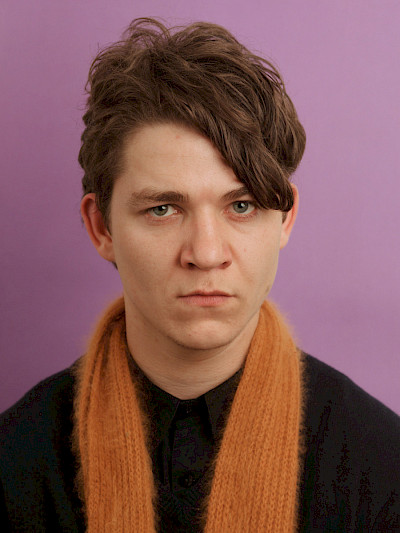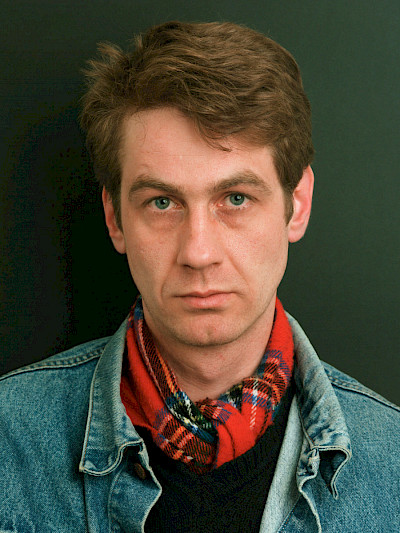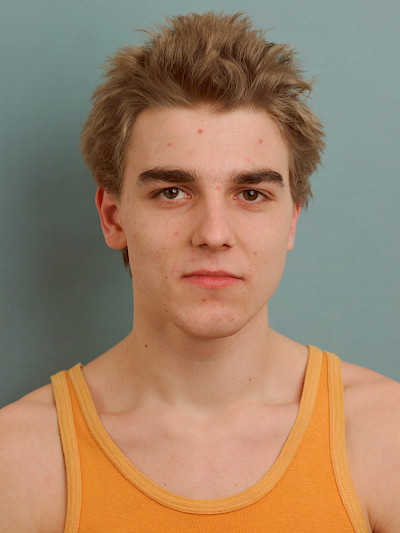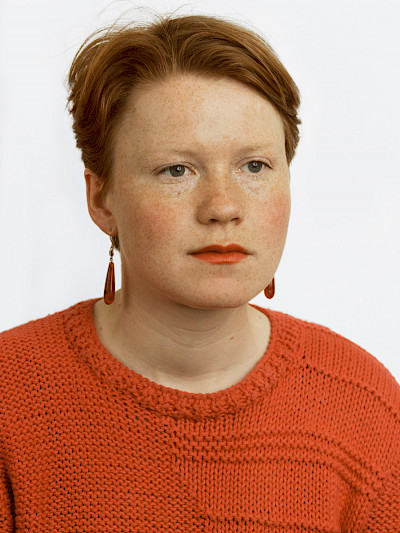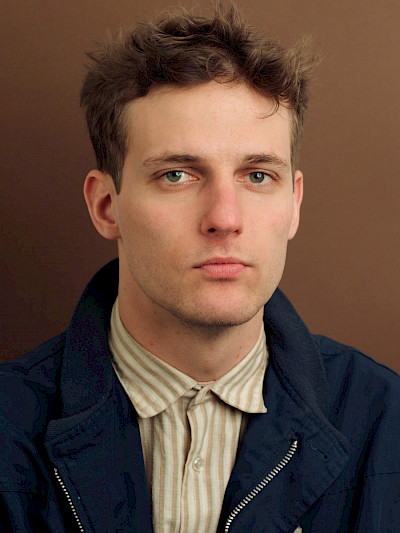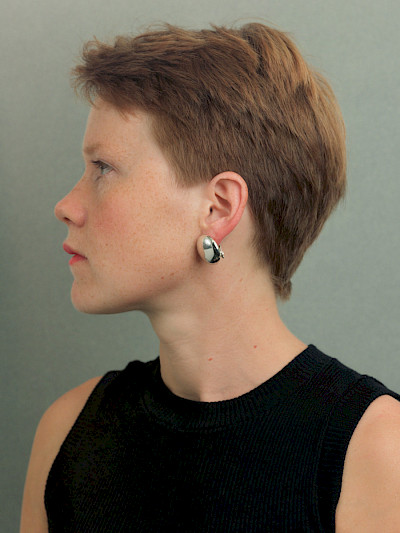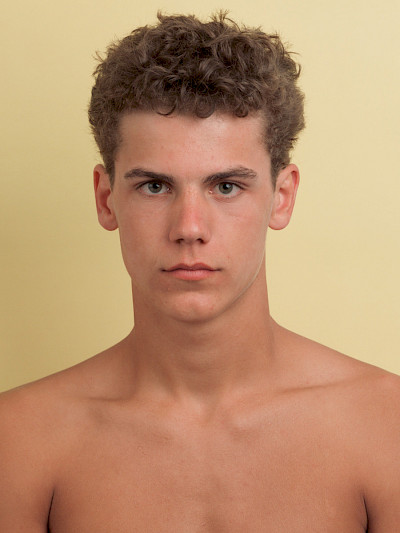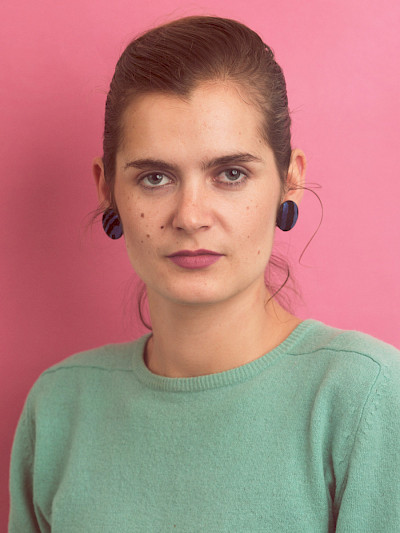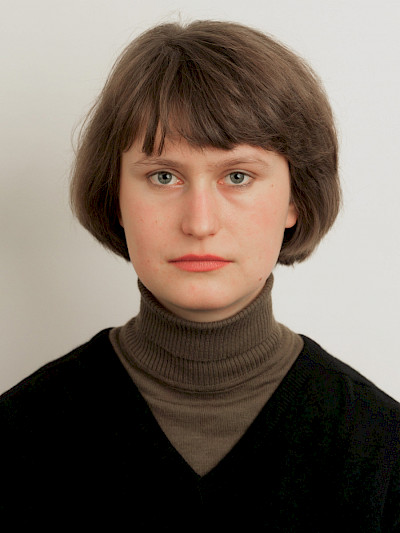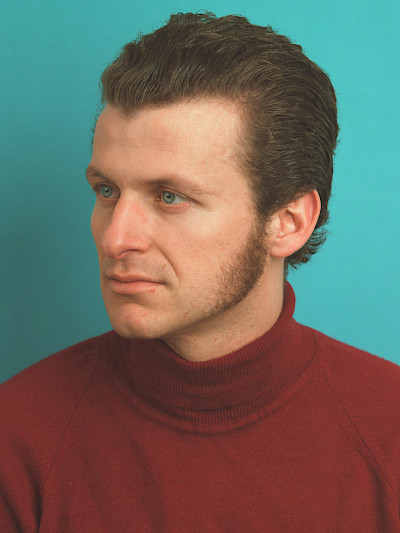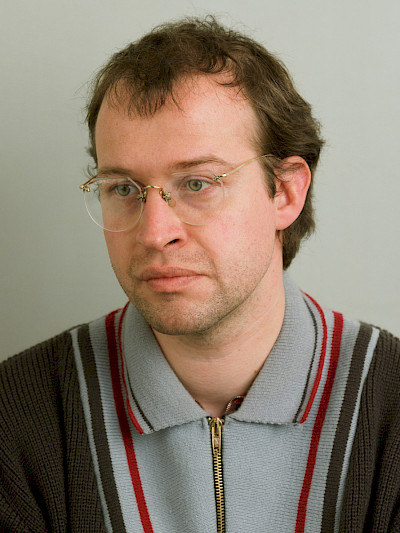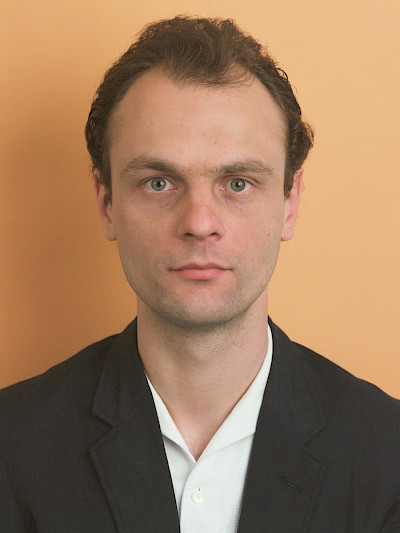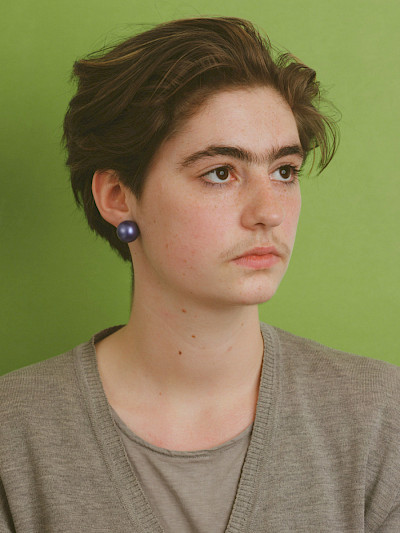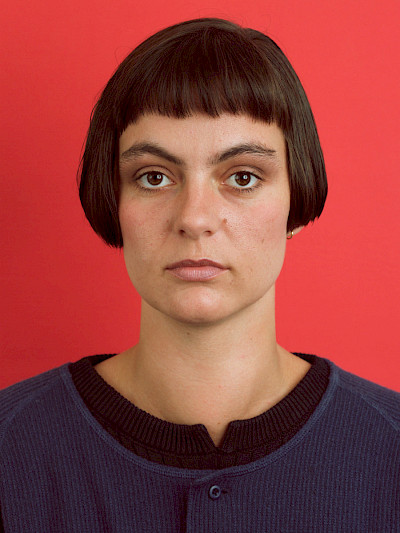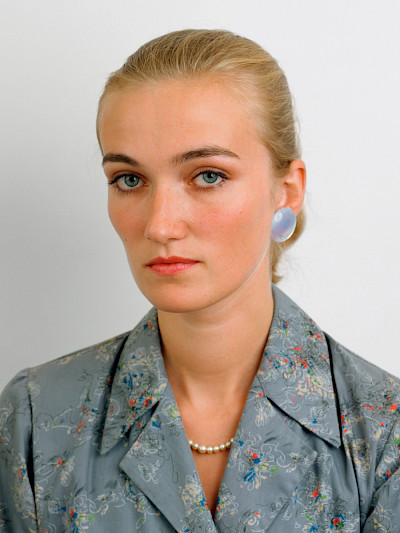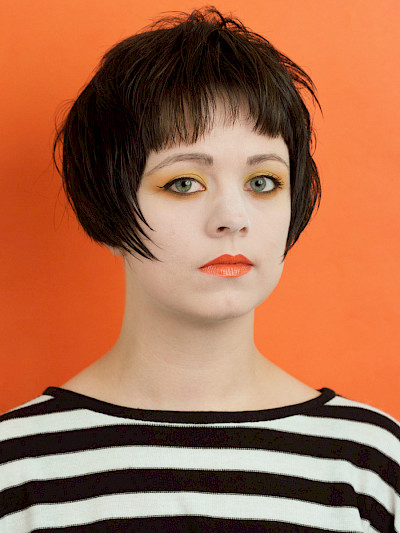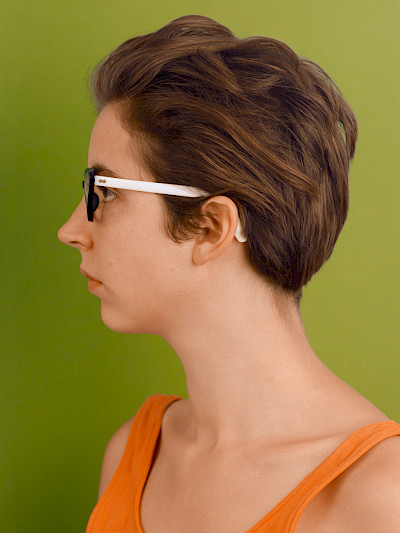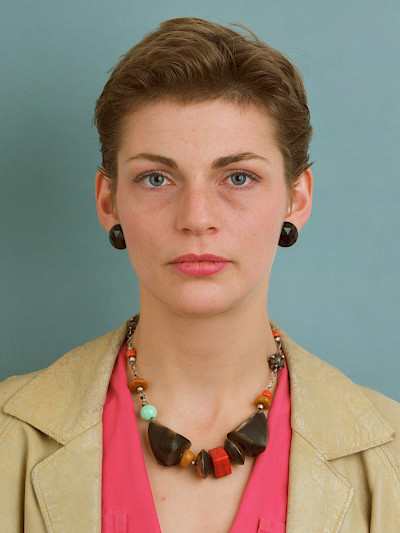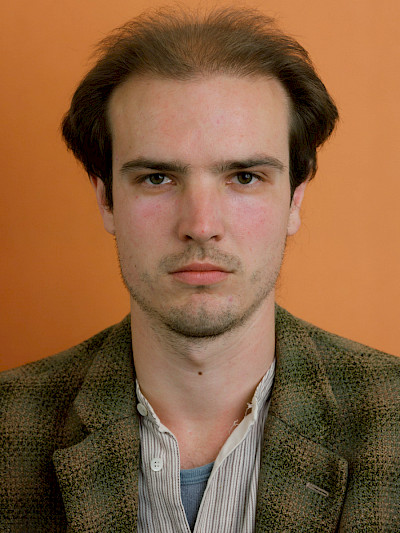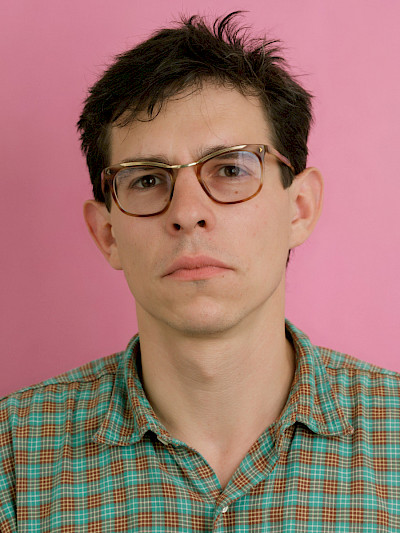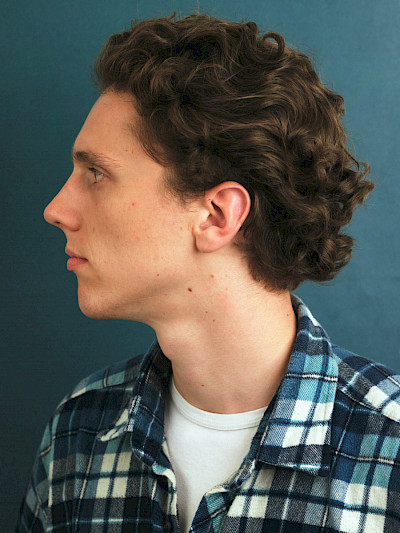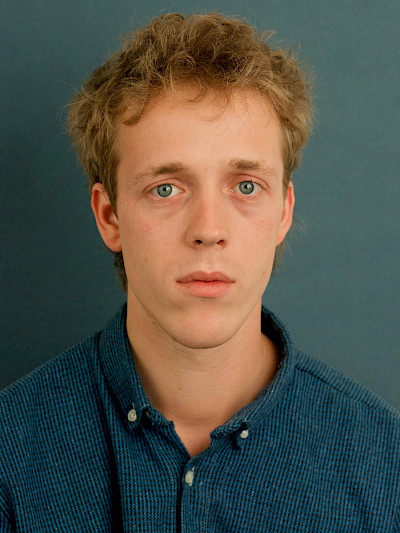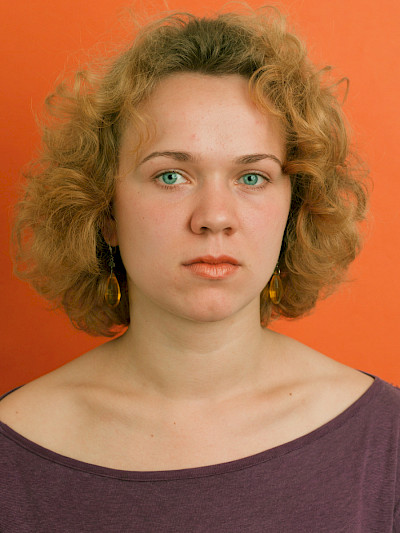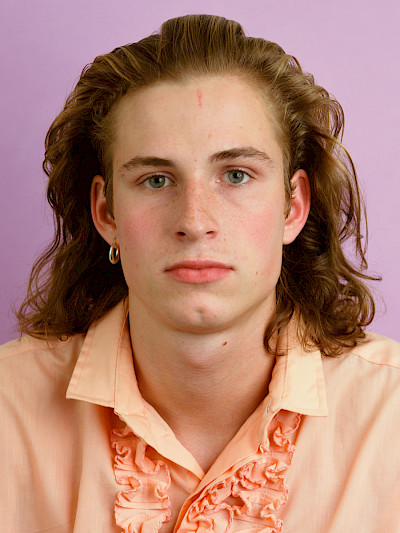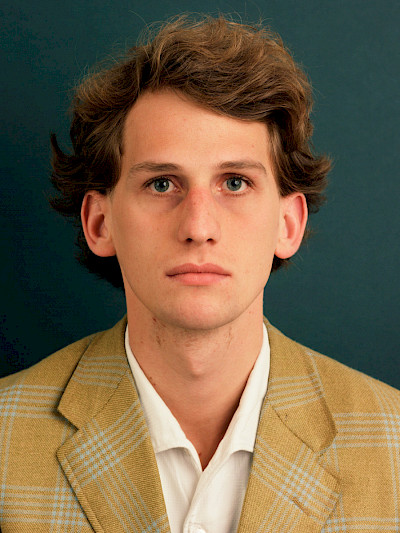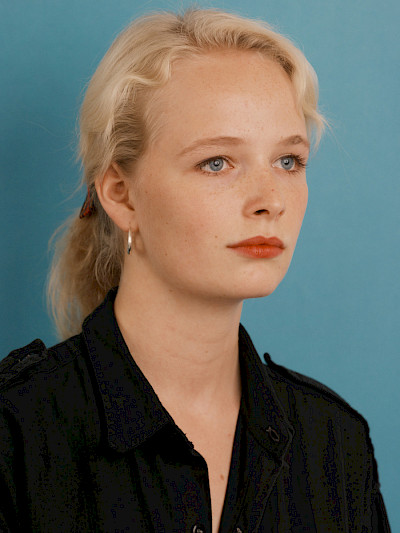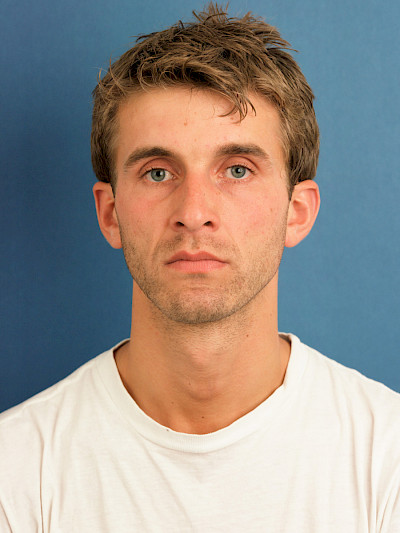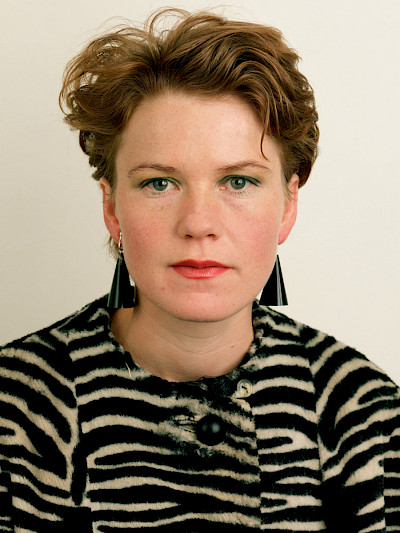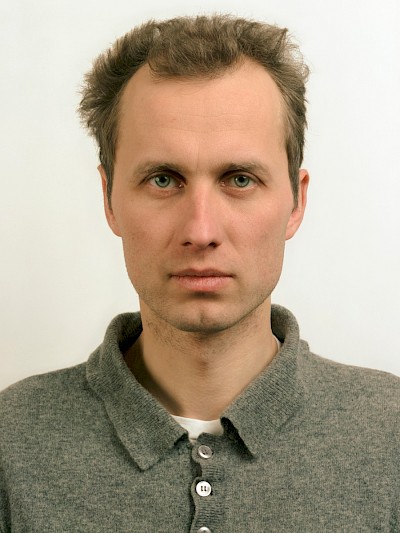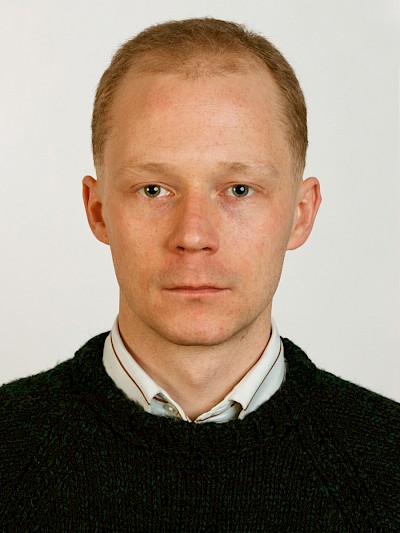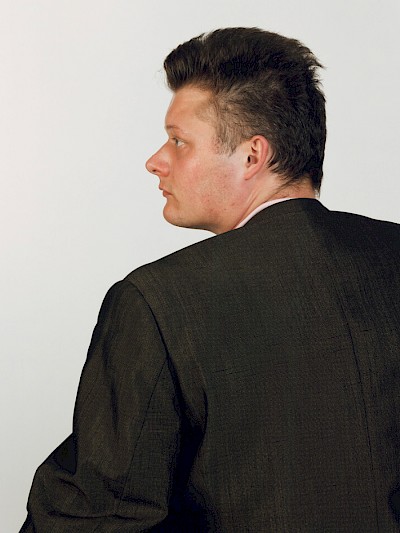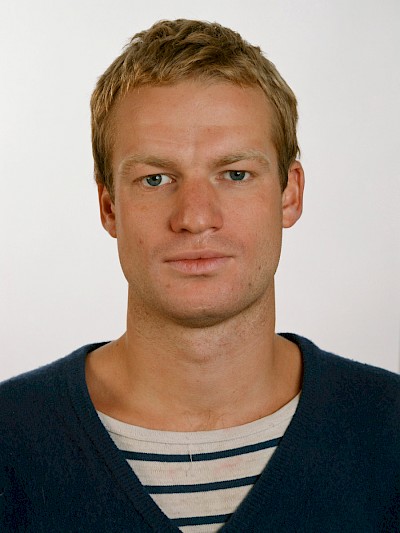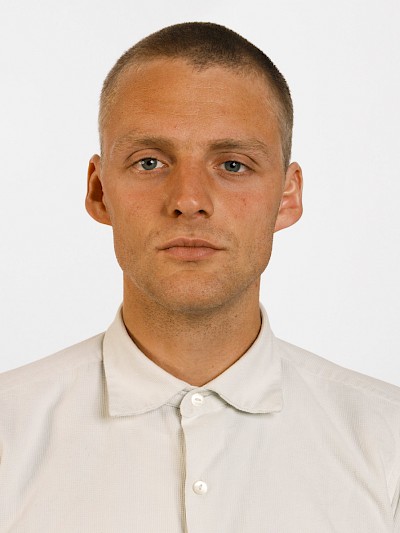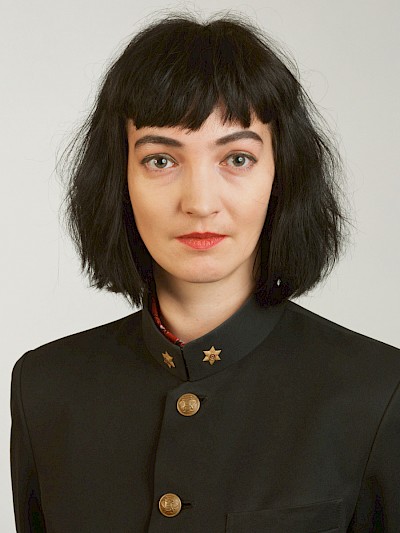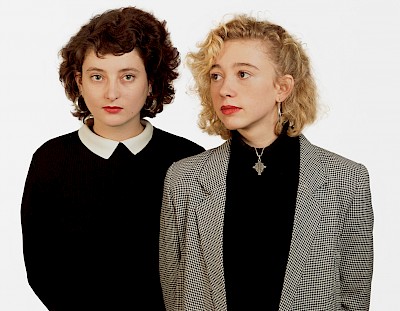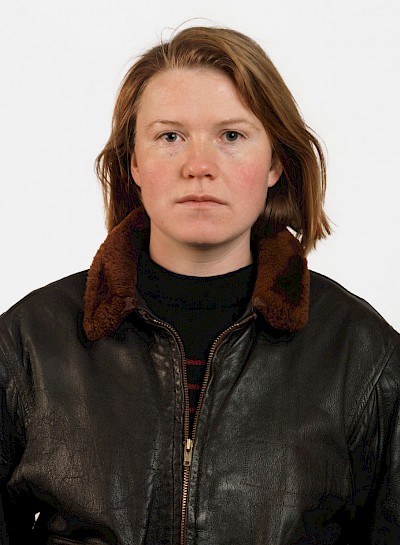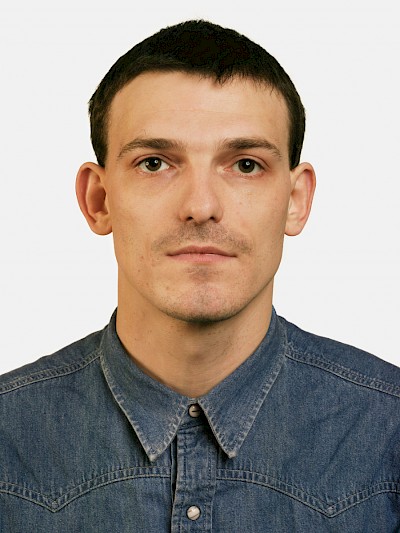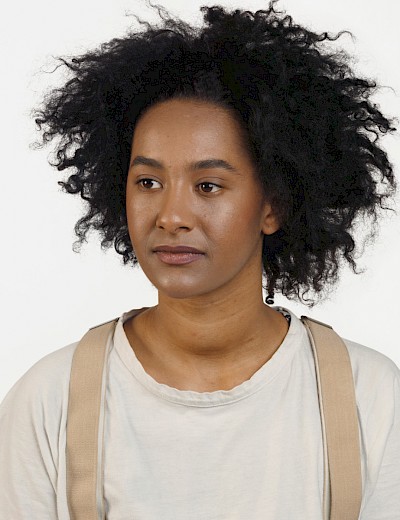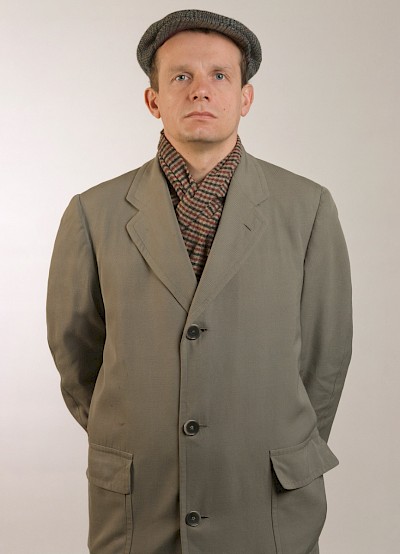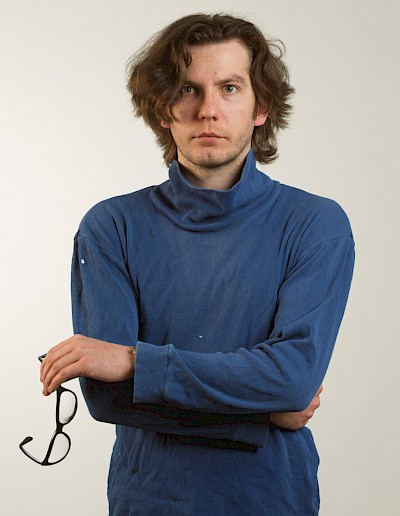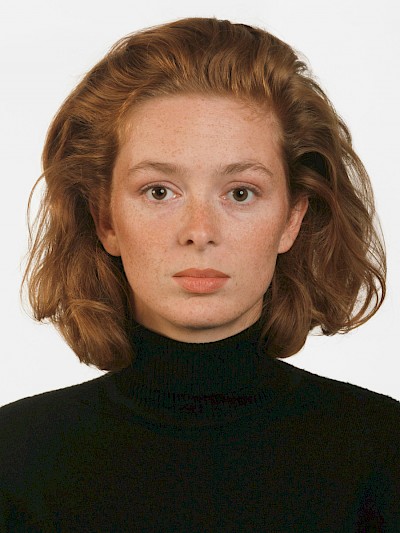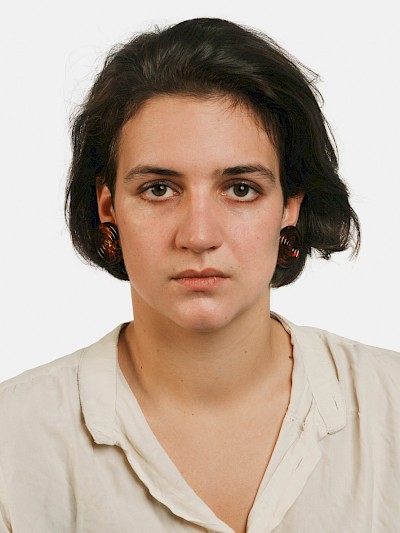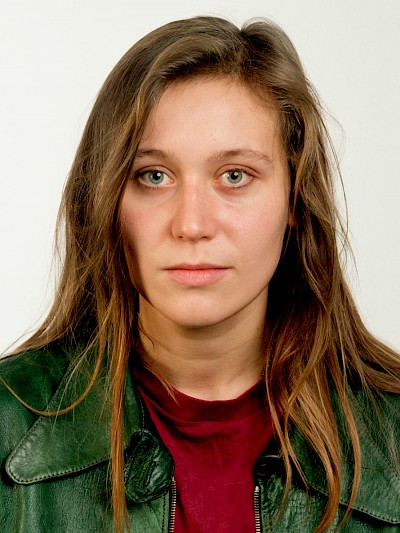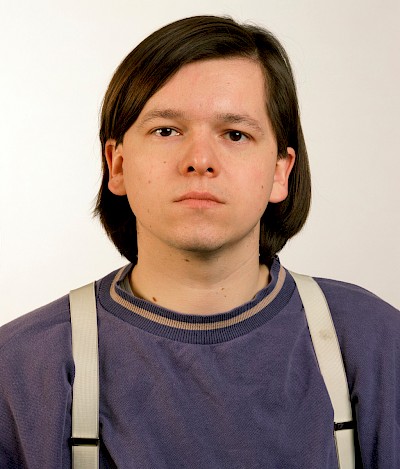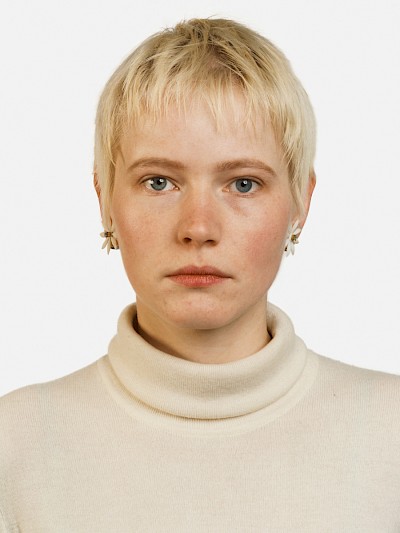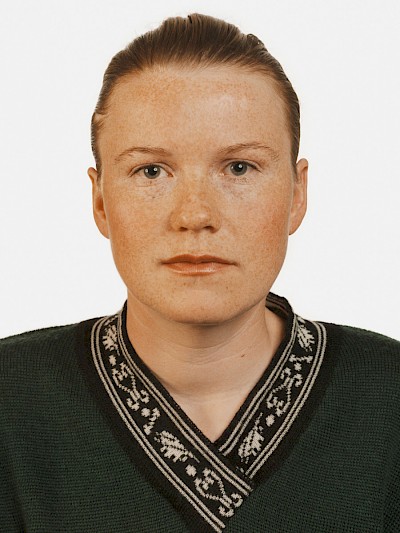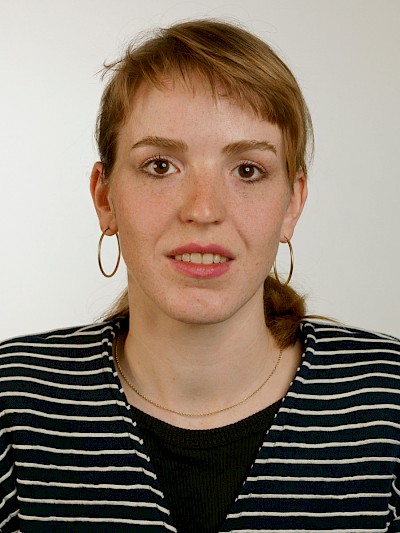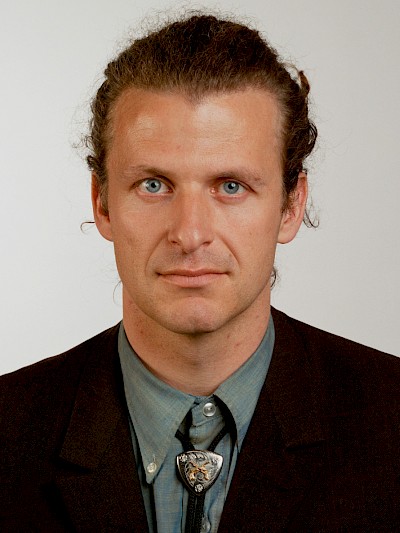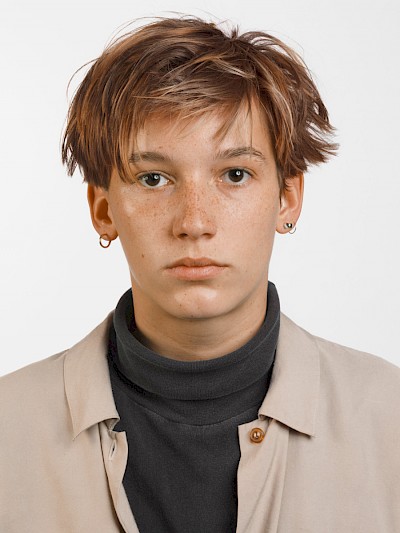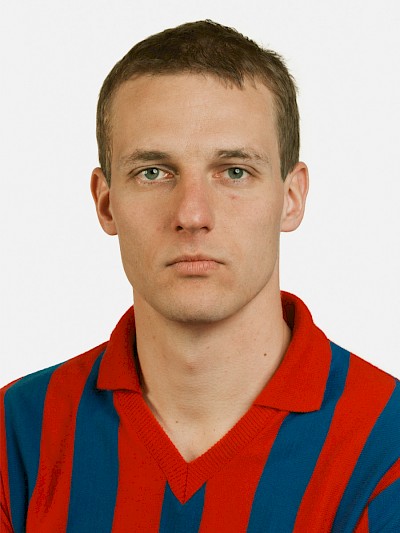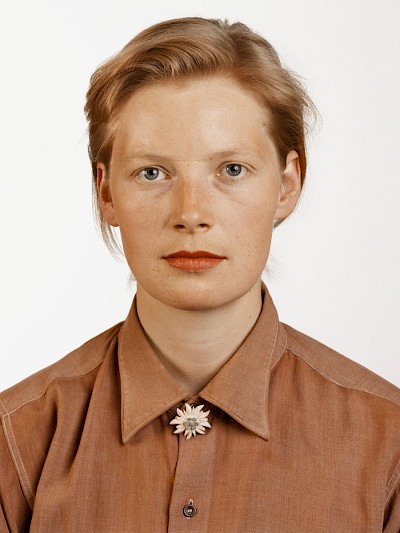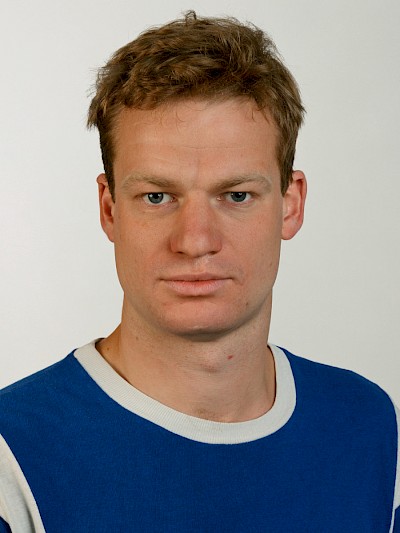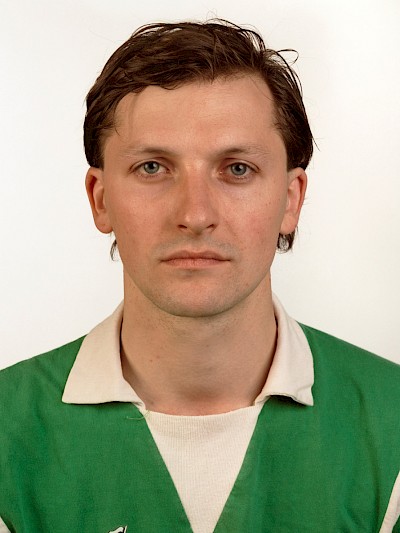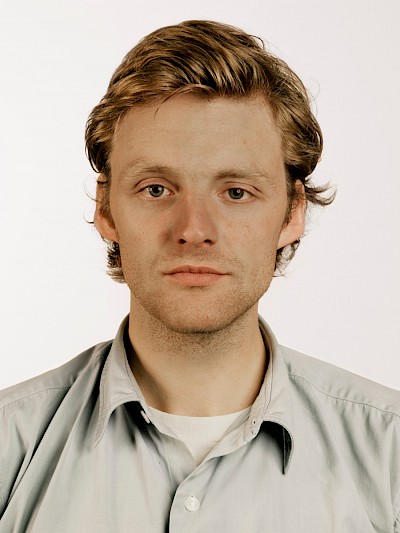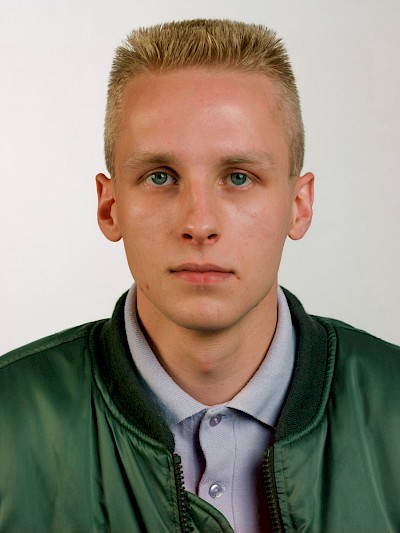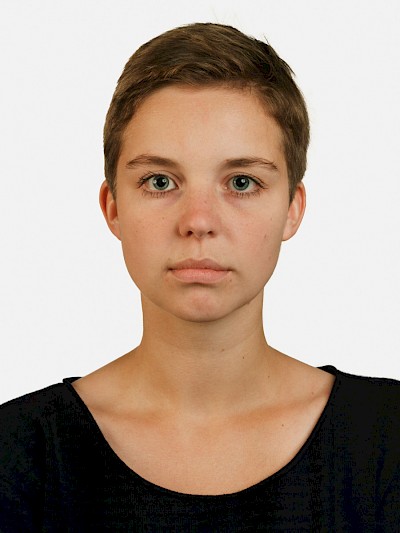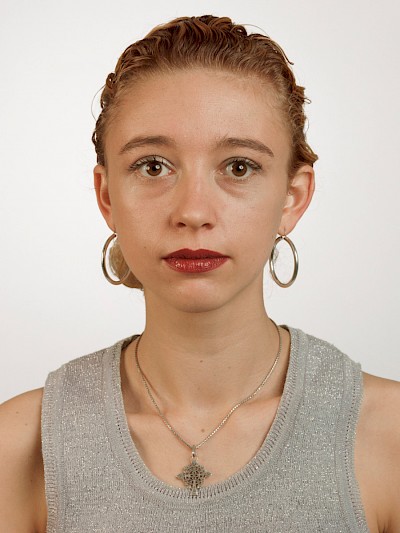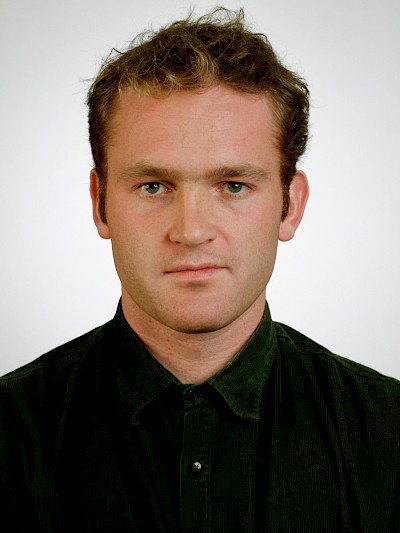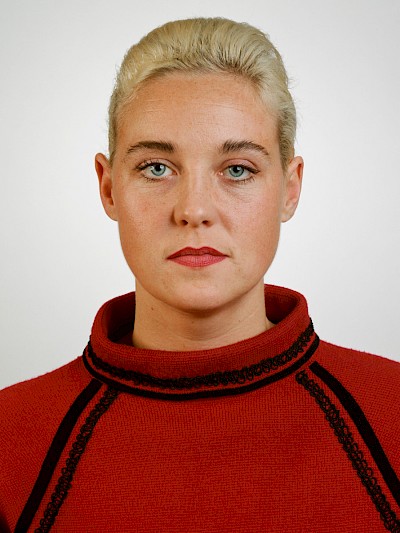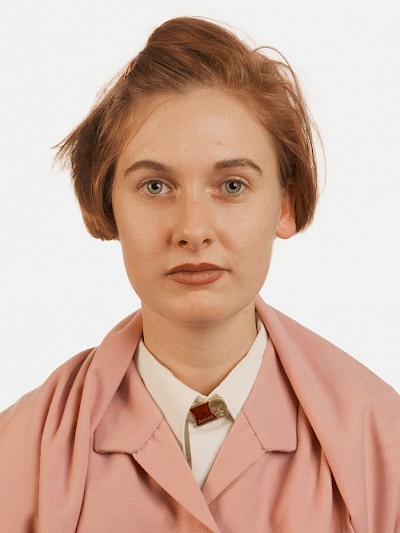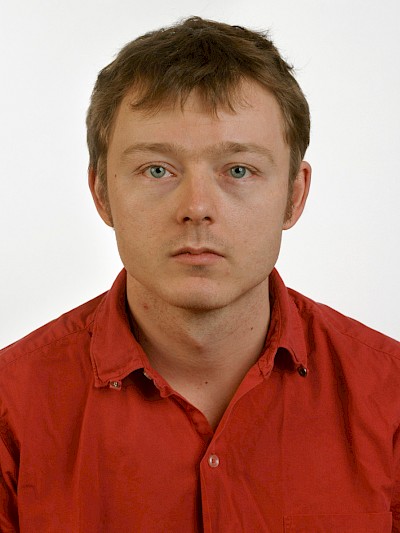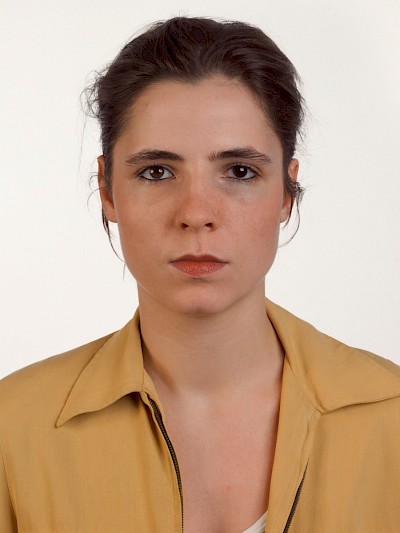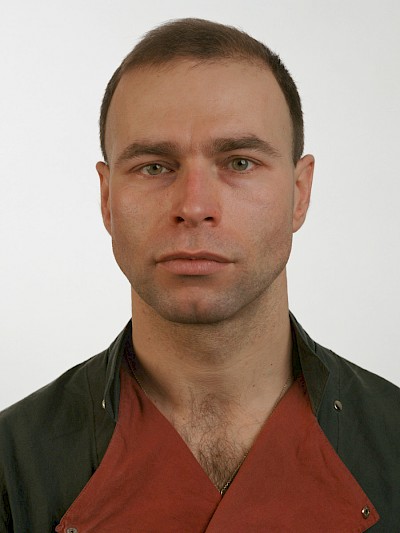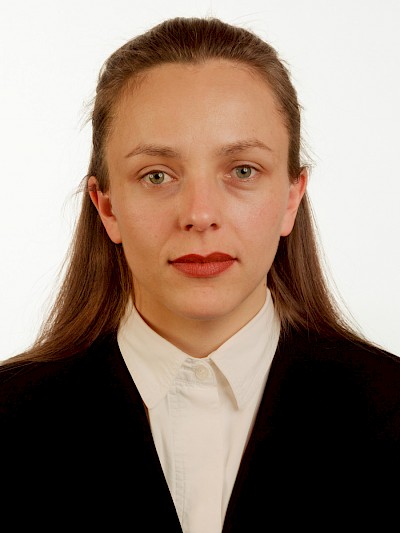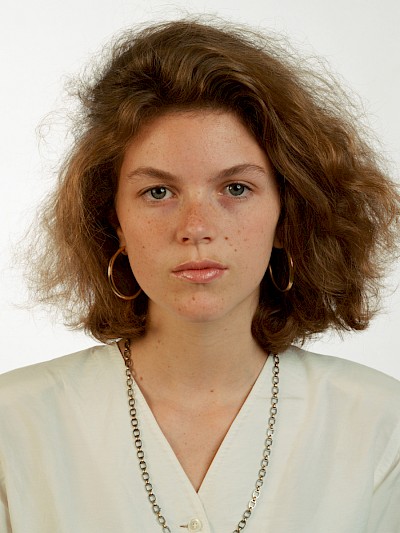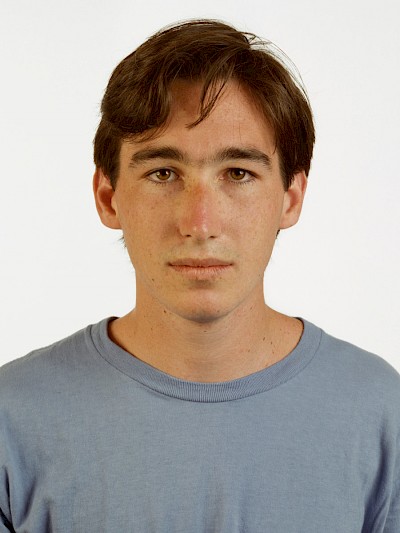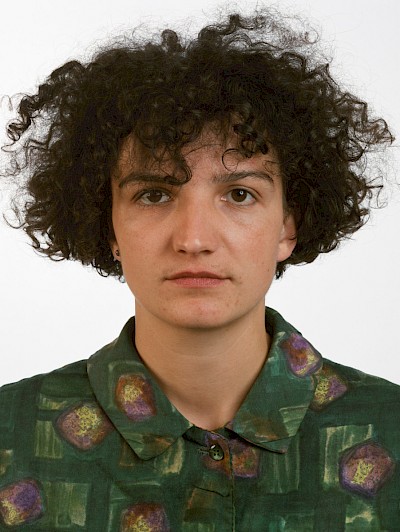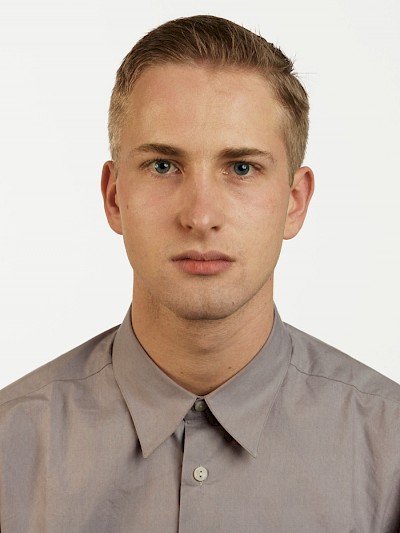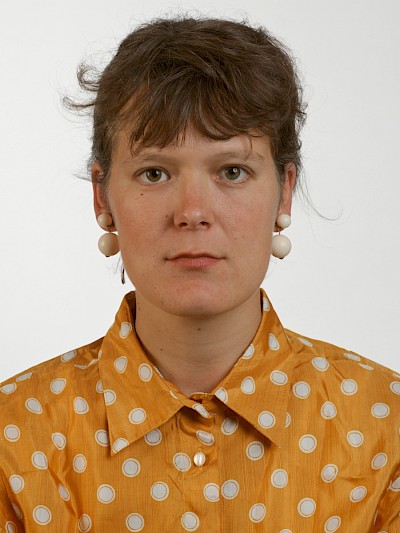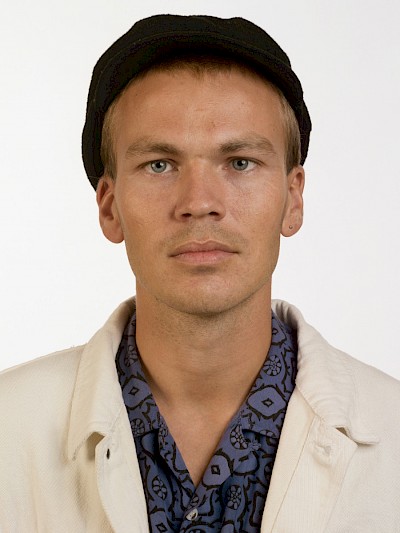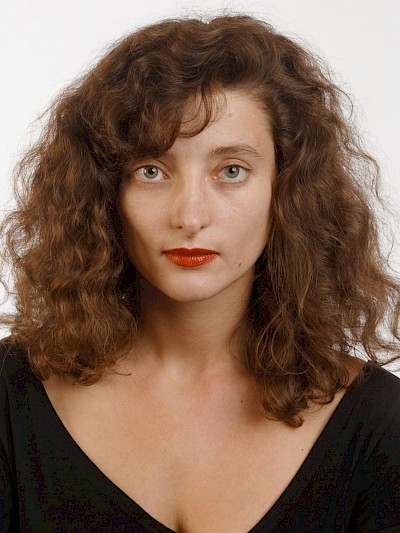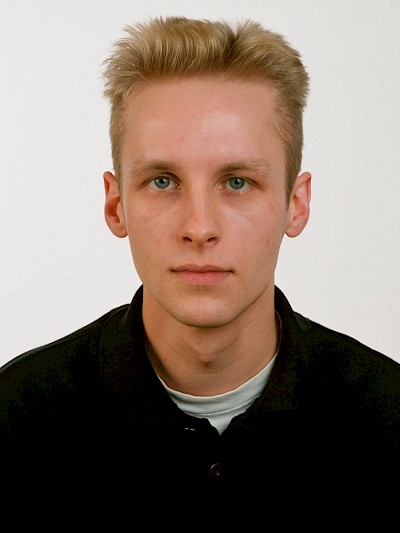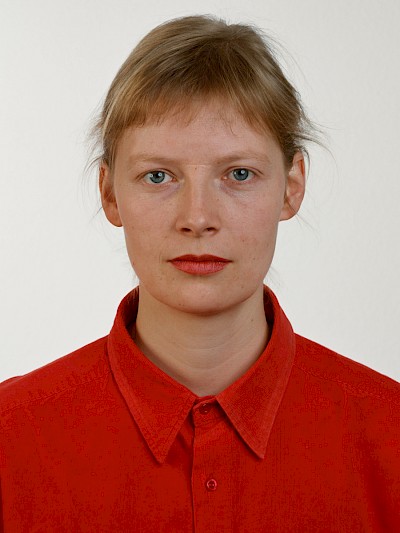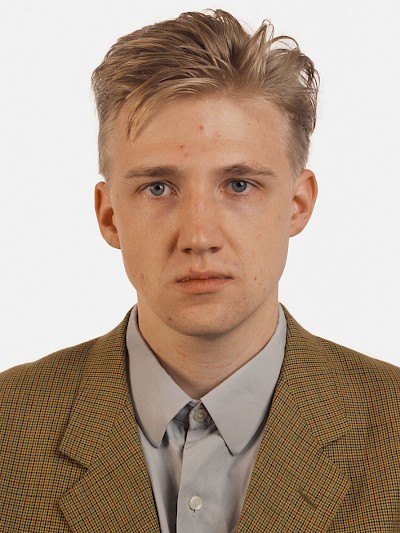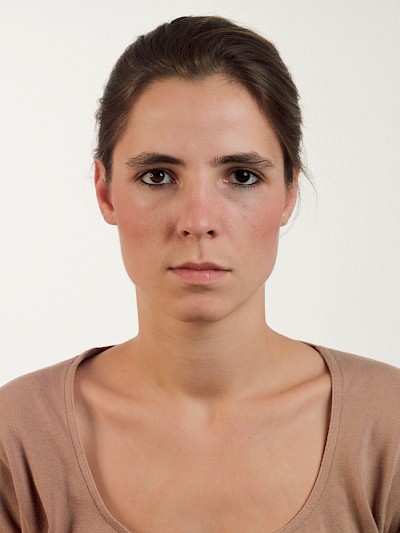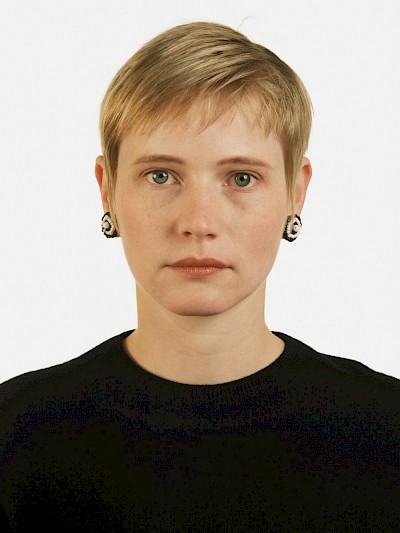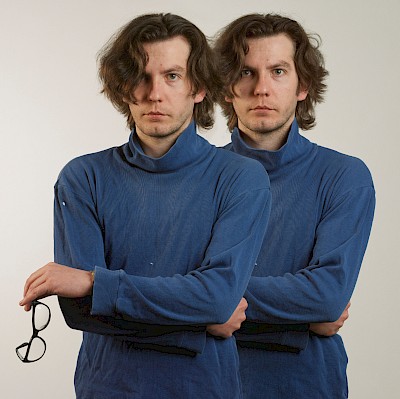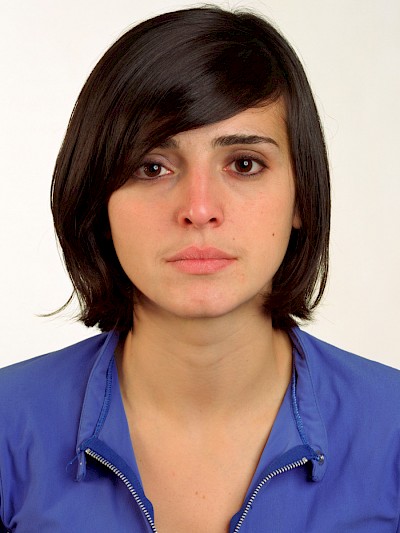Portraits
Around 1980, Thomas Ruff began to concern himself for the first time with the genre of “portraits”; it was a type of image that had, at the time, as good as vanished from the art of the day. Alongside portrait work for the Düsseldorf-based band EKG (Ruff was its Art Director), he experimented with the various opportunities portraits offered and made an intensive study of “portrait” as a genre. In the end, he chose a neutral image of the face and upper torso that emphasized the portrayed person’s facial features and avoided any psychologizing interpretation. The idea was to photograph each person as if she or he were a plaster bust, because, according to Ruff, a photograph only reproduces the surface of things anyway. The portraits were taken with the sitters wearing their everyday clothes and with a calm and serious look on their faces. Any form of emotional involvement such as smiles, grins, or flirting with the camera was eschewed. Ruff intuitively chose as models for the portraits persons he actually knew: friends and acquaintances of his own age whom he had met at the academy or in Düsseldorf’s nightlife (on “Ratinger Strasse”).
The objective of the series was to create roughly 100 portraits sized 24 x 18 cm that could be hung in a row like an ancestral portrait gallery. In order to ensure that the series did not become too monotonous owing to the identical background, Ruff initially used a principle culled from the press and which he had discovered while researching the project. The cover of a weekly TV guide regularly showed the full-format photo of a TV starlet in front of a background, the color of which changed from issue to issue. For his version, he purchased cardstock (approx. 50 x 70 cm) in various colors. Since he did not want to decide which color went with which person, the persons portrayed were asked to choose their own background, in front of which he then photographed them from different angles (frontally, in profile, and in semi-profile). In 1986, Ruff decided to enlarge some of these portraits (210 x 165 cm), but soon realized that the colored background became too dominant on such a large scale.
Between 1984 and 1986, Thomas Ruff experimented with the dimensions of his portraits, looking for another format in addition to the “reduced reality” of 24 x 18 cm. When, in 1986, he managed to make five prints on the largest photo paper available, he discovered that a completely new picture had emerged. The person’s gaze and expression were intensified by the enlargement, and the image’s visual presence likewise foregrounded. In 1991, he was forced to discontinue the series as the photographic paper he had been using for his prints ceased to be available. In 1998, he returned to the theme of portraits and began a new test series to find a combination of film, developing process, and photographic paper that suited his portraits. In this way, he sought to establish whether it was legitimate to imitate one’s own work and whether the now 20 to 35-year-olds looked different than they had when he had portrayed them 10-15 years earlier.

Portraits
Around 1980, Thomas Ruff began to concern himself for the first time with the genre of “portraits”; it was a type of image that had, at the time, as good as vanished from the art of the day. Alongside portrait work for the Düsseldorf-based band EKG (Ruff was its Art Director), he experimented with the various opportunities portraits offered and made an intensive study of “portrait” as a genre. In the end, he chose a neutral image of the face and upper torso that emphasized the portrayed person’s facial features and avoided any psychologizing interpretation. The idea was to photograph each person as if she or he were a plaster bust, because, according to Ruff, a photograph only reproduces the surface of things anyway. The portraits were taken with the sitters wearing their everyday clothes and with a calm and serious look on their faces. Any form of emotional involvement such as smiles, grins, or flirting with the camera was eschewed. Ruff intuitively chose as models for the portraits persons he actually knew: friends and acquaintances of his own age whom he had met at the academy or in Düsseldorf’s nightlife (on “Ratinger Strasse”).
The objective of the series was to create roughly 100 portraits sized 24 x 18 cm that could be hung in a row like an ancestral portrait gallery. In order to ensure that the series did not become too monotonous owing to the identical background, Ruff initially used a principle culled from the press and which he had discovered while researching the project. The cover of a weekly TV guide regularly showed the full-format photo of a TV starlet in front of a background, the color of which changed from issue to issue. For his version, he purchased cardstock (approx. 50 x 70 cm) in various colors. Since he did not want to decide which color went with which person, the persons portrayed were asked to choose their own background, in front of which he then photographed them from different angles (frontally, in profile, and in semi-profile). In 1986, Ruff decided to enlarge some of these portraits (210 x 165 cm), but soon realized that the colored background became too dominant on such a large scale.
Between 1984 and 1986, Thomas Ruff experimented with the dimensions of his portraits, looking for another format in addition to the “reduced reality” of 24 x 18 cm. When, in 1986, he managed to make five prints on the largest photo paper available, he discovered that a completely new picture had emerged. The person’s gaze and expression were intensified by the enlargement, and the image’s visual presence likewise foregrounded. In 1991, he was forced to discontinue the series as the photographic paper he had been using for his prints ceased to be available. In 1998, he returned to the theme of portraits and began a new test series to find a combination of film, developing process, and photographic paper that suited his portraits. In this way, he sought to establish whether it was legitimate to imitate one’s own work and whether the now 20 to 35-year-olds looked different than they had when he had portrayed them 10-15 years earlier.






